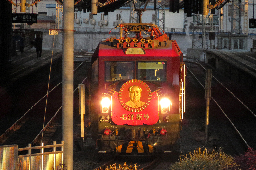Indigenous people get first priority to stay. Basically everyone else has to go. Phoenix must be obliterated. The desert should be a desert, not a golf course and alfalfa farm.
In the immortal words of Bobby Hill:
111 Degrees? Phoenix can't really be that hot, can it? Oh my god! It's like standing on the sun! This city should not exist. It is a monument to man's arrogance
Sounds similar to Johannesburg.
Largest city in the world without its own water supply folks
"Yeah this look like a nice place to farm, the place called 'arid zone' by the spaniards"
It is amazing if there is an underground water table to exploit. I'm sure that will never run out.
Same shit as the Israel "making the desert bloom" talking point. Making a desert bloom by using up all the water under it in a matter of decades is not an achievement.
Israel “making the desert bloom” talking point. Making a desert bloom by using up all the water under it in a matter of decades is not an achievement.
I thought they were desalinating seawater, what are they planning to do with this problem?
It is a currently ongoing crisis. Desalination is very resource intensive, and the main aquifers in Palestine are shrinking from overuse. It is the same in most of the world in fairness.
Imagine all the people who were lucky enough to be able to buy a house, but then they find out they’re living in what is about to be a sacrifice zone due to climate change. I have a feeling that’s gonna be common over the next few decades. Even the people who thought they were safe aren’t safe, and it’s not always gonna be the places we expect
Eventually, yeah. But some regions are on the chopping block long before others. Arizona is not a place you're going to want to be in the very near future.
I think there will probably be a few places affected far less than others, at least at first, and that’s where the rich are gonna go, building sea walls or billion dollar homes for themselves
Lots n lots of Co-Workers telling me about their plans to buy a retirement house / family investment near where the coast is right now
one of the keystone strategies of "settling" the southwest was to dam+canal critical water sources and push desertification into areas of native population, especially once those people were reasonably contained into a defined geographic area and agreeable to stay there to preserve their ancestral culture. in the popular mind, this process ended and the "west was won" but in reality it never stopped and is happening today with even more ruthless efficiency to preserve and expand the white settlements, always at the expense of the indigenous people.
phoenix is archeologically interesting, as it was once home to a pre-columbian culture sometimes called Hohokam which had an extremely extensive canal and irrigation system for the Gila river to support a very large population. it ultimately collapsed, though there is dispute about why... over reliance on irrigation/saline buildup (agricultural collapse) possibly a prolonged climate event, maybe both. white settler-colonists weren't and still aren't known for giving a shit about environmental history, even when it might yield a crucial understanding of long term sustainability. phoenix the white settlement was built in the area of this ancient cultural capital, making use of those old canal and irrigation systems but basically none of the cultural knowledge.
it's one of my concerns with the US moving further into an age of destabilized climate. we have no clue where is a smart place to settle and live. many of our cities are are built on top of old population centers, but some are completely novel. and i don't mean just places like vegas. i mean like chicago. certainly there are paleoclimatologists and environmental historians who study these things, but we don't even listen to current climatologists or environmental scientists about basic, obvious shit happening right now. good luck getting the power structure to listen to some historian piece together a mysterious cyclical flood event that was once seared into the cultural memory of a now marginalized and purposely ignored people.
further reading: https://en.wikipedia.org/wiki/Oasisamerica
Yea, we'll let the natives have the desert while we keep occupying all the rest of the land. They are so in touch with nature and don't need dumb materialistic stuff like "arable farmland" or "a stable water supply" or "somewhere to evacuate when there are heatstrokes our economic system keeps producing "
-
The number of people in Arizona is unsustainable by any measure
-
Anglos live by the far most unsustainable lives in Arizona (and everywhere else)
-
It would be morally correct to remove destructive settlers
-
It would be completely unjustifiable to remove native people
-
20% of the current population of Arizona could live sustainable, water rich lives in Arizona
-
Native people of Arizona want agency over the land of Arizona, the land of their people - they aren't asking for northern forests
Unless your suggestion is that we also remove the native people, what do you suggest?
i'm just scraeming "problematic" and gesturing vaguely at everything but yeah those things would be good but it's not going to happen and even if it did, being surrounded by settlers on all sides poisoning the entire biome makes even that a dead end
https://apnews.com/article/politics-toronto-arizona-environment-f4b4ad6a0d4dc233fc931c59917c00a6
https://www.npr.org/2022/06/02/1102575257/the-reopening-of-an-uranium-mine-in-arizona-has-indigenous-people-worried
https://www.motherjones.com/environment/2022/04/copper-oak-flat-apache-stronghold-sacred-run-electric-car-batteries-green-energy/
The sovereignty rights of Arizona tribes are constantly under attack: environmentally, politically, economically. Given the other issues caused by Arizona's climate, it's the place where literal mass-removal of settlers makes the most sense of anywhere in the US and is certainly the most justifiable.
Is that likely to happen? No, but in the mean time, what I'm arguing for is more Indian sovereignty in Arizona as the best solution to the climate disaster of the state and the only way to right the wrongs of settlement and displacement.
-
No! We must build a pipe line from lake Michigan to Phoenix and save our glorious strip malls.
Pretty much everyone in the great lakes region would immediately start doing domestic terrorism to that
The motherfucker is from Massachusetts! Sold himself a cowboy hat and moved to AZ to be a bigger racist
We must immediately move 80% of the population to Arizona
It would be funny, I think.
If only James Reavis still held the barony and could expel all the Americans.
Some of my relatives used to live near Tuscon, AZ, which is a microcosm of settler-colonialism and water mismanagement. The Santa Cruz river used to flow year-round through the valley, but today it's a trickle during the dry season:
Most of the Santa Cruz River is usually a dry riverbed, unless the area receives significant rainfall. This was not always the case, but a combination of human errors and natural catastrophes in the late nineteenth century led to the decline of the Santa Cruz.[4] Prior to this, water flowed perennially in a number of places, including along nine stretches in the Tucson area, and the river's banks were lined with cottonwood and mesquite bosques.[5][6] Although there is some disagreement among historians and hydrologists as to what the biggest causes of the river's decline was, contributing human factors included overgrazing, excessive pumping of groundwater for agricultural irrigation and industry, and the construction of dams and ditches.[6] In the mid-20th century, the river's stretch through Tucson dried up completely.
A huge quantity of water is used by a nearby copper mine and the almond farms in Green Valley. Meanwhile, the Tohono O’odham Nation, which used to be self-sustaining with Three Sisters agriculture, now most of their income comes from casinos and tourists visiting the San Xavier Mission (built by native slave labor under Spanish colonial rule).
Also: read The Water Knife










